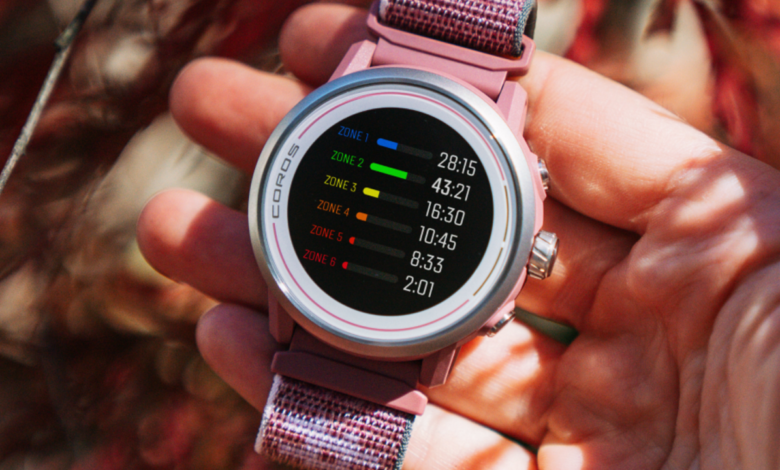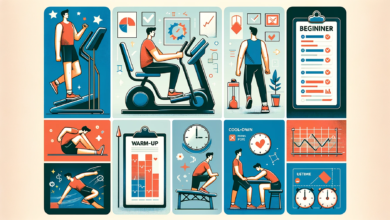Understanding Heart Rate Zones: A Comprehensive Guide

Heart rate zones are critical tools athletes and fitness enthusiasts use to optimize their training and health outcomes. By understanding and utilizing heart rate zones, individuals can ensure they are exercising within the optimal intensity range to meet specific fitness goals. This guide explains heart rate zones, how they can be effectively used, and why they matter in your fitness journey.
What Are Heart Rate Zones?
Heart rate zones refer to specific ranges that your heart rate can hit during exercise, each corresponding to a different level of exercise intensity. These zones are typically expressed as a percentage of your maximum heart rate (MHR) and guide training decisions to optimize fitness and performance outcomes.
The Science Behind Heart Rate Zones
Heart rate zones are based on your body’s physiological responses to different levels of physical exertion. Each zone elicits a unique response from your cardiovascular and respiratory systems, making them suitable for achieving various fitness goals.
Zone 1: Light Intensity (50-60% of MHR)
- Purpose: Helps in recovery, warm-ups, and cool-downs.
- Benefits: Enhances blood flow and helps muscles recover.
Zone 2: Moderate Intensity (60-70% of MHR)
- Purpose: Known as the fat-burning zone.
- Benefits: Improves endurance and aerobic capacity, using fat as the primary energy source.
Zone 3: Aerobic (70-80% of MHR)
- Purpose: Enhances aerobic fitness without much stress.
- Benefits: Increases cardiovascular and respiratory efficiency.
Zone 4: Anaerobic Threshold (80-90% of MHR)
- Purpose: Increases athletic performance.
- Benefits: Improves the ability to sustain high-intensity effort and delays fatigue.
Zone 5: Maximum Effort (90-100% of MHR)
- Purpose: Used for interval training to improve speed and power.
- Benefits: Develops fast-twitch muscle fibres and enhances explosive strength.
How to Calculate Your Maximum Heart Rate
To effectively use heart rate zones, you first need to determine your maximum heart rate. The simplest method is the age-related formula: 220 minus your age. However, this can be inaccurate for many individuals, especially trained athletes. Other techniques, such as stress tests under professional supervision, can provide more precise measurements.
Applying Heart Rate Zones to Training
Using heart rate zones in training involves aligning your exercise intensity with the zones that match your fitness goals. For example:
- For weight management: Focus on longer sessions in zones 2 and 3 where fat burning is maximized.
- Toiimprovedurance: M,xmixaining in zones 2 and 3 to enhance fat burning and aerobic capacity.
- For performance and speed: Incorporate intervals in zones 4 and 5 to boost anaerobic capabilities and speed.
Technology and Heart Rate Monitoring
Advancements in wearable technology have made it easier to monitor heart rate zones. Devices like fitness watches and heart rate chest straps can provide real-time feedback, allowing adjustments during workouts to maintain the desired intensity level.
Conclusion
Heart rate zones are a foundational aspect of modern training regimes. They allow individuals to tailor their workouts based on scientific principles to effectively enhance fitness, performance, and overall health. Understanding and utilizing heart rate zones can lead to more productive workouts and better results, whether you are a beginner or a seasoned athlete.
FAQs About Heart Rate Zones
1. What are heart rate zones, and why are they important?
Heart rate zones are specific ranges of heart rates corresponding to different exercise intensity levels. They are crucial because they help individuals optimize their workouts by ensuring they exercise at the right intensity to achieve their fitness goals efficiently.
2. How do I determine my maximum heart rate (MHR)?
The most common method is the age-related formula: 220 minus your age. However, stress tests conducted under professional supervision or other formulas may be used for more accurate results, especially for trained athletes.
3. Can I rely solely on how I feel during exercise, or must I monitor heart rate zones?
While perceived exertion can be a helpful tool, monitoring heart rate zones provides objective data on the intensity of your workout, ensuring you’re training in the most effective range for your goals.
4. How do I know if I’m in the correct heart rate zone during exercise?
Wearable technology such as fitness watches and heart rate monitors can provide real-time feedback on your heart rate, allowing you to adjust your intensity to stay within the desired zone.
5. How often should I train in each heart rate zone?
The frequency of training in each zone depends on your individual fitness goals. However, a balanced approach with a mix of zones is often recommended to improve overall fitness and performance.
6. Can heart rate zones help with weight loss?
Training in specific heart rate zones, particularly zones 2 and 3, where fat burning is optimized, can be beneficial for weight management goals.
7. Are heart rate zones only relevant for athletes, or can anyone benefit from using them?
Heart rate zones are relevant for anyone interested in optimizing their workouts and improving their fitness level. Whether you’re a beginner or a seasoned athlete, understanding and utilizing heart rate zones can lead to better results in your fitness journey.



